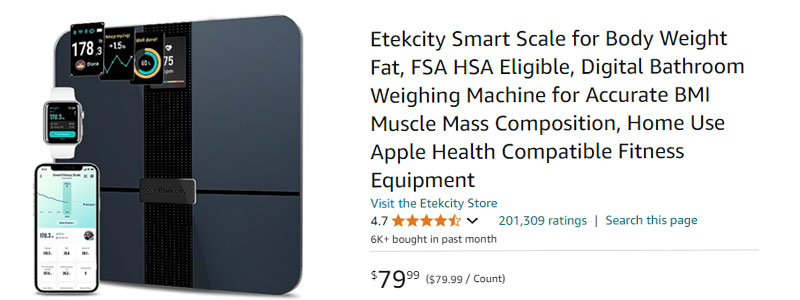Table of Contents
Intermittent fasting (IF) is an eating diet that cycles between periods of eating and fasting. Instead of focusing on what you eat, IF schedules when you eat. This approach has gained popularity for its potential benefits like weight loss and improved metabolic health. But starting any new routine can feel daunting – this beginner’s guide will ease you into the world of intermittent fasting.
The Benefits of IF for Beginners
While not a magic solution, intermittent fasting offers some appealing benefits for beginners:
- Simplified weight loss through natural calorie reduction during fasting periods.
- Support for metabolic health by improving insulin sensitivity
- An alternative to strict diets that restrict what you eat
IF is suitable for most healthy adults. However, certain groups like pregnant women or those with conditions like diabetes should consult a doctor before starting.

Getting Started on Your Intermittent Fasting Journey
The biggest hurdle for IF beginners is adjusting their mindset and routine around this new eating schedule. Don’t rush into extended fasts right away. Ease into it gradually:
- Start by skipping a single meal, like breakfast or dinner, to get accustomed to periods of fasting.
- Slowly increase your fasting windows over the course of 1-2 weeks until you hit your target schedule.
- Start with simple meals to prevent overeating during eating periods.
Customize your approach based on factors like your schedule, hunger levels, and weight goals. Be patient as your body adapts.
Two Most Beginner-Friendly IF Methods
The 16/8 Method: Eat for 8 hours, fast for 16 hours. For example, stop eating at 8pm, skip breakfast, and start your eating window at 12pm the next day.
Transition Tips:
- Start eventually with a 12-hour fast if 16 hours feels too much and too long at the start
- Drink plenty of fluids like water, black coffee, and unsweetened teas during fasts
- Choose nutrient-dense foods during eating windows to feel fuller
The 5:2 Diet: Eat normally 5 days per week. For the other 2 days, limit intake to 500-600 calories. These low-calorie “fasting” days should be non-consecutive.
Managing Low-Cal Days:
- Have one small meal of lean protein and veggies
- Fill up on high-volume, low-cal foods like broth-based soups
- Space out mini-meals or snacks throughout the day
A Beginner’s Guide to What to Eat
During eating windows, prioritize whole, nutrient-dense foods such as:
- Lean proteins: Poultry, fish, eggs, tofu
- Fruits and veggies
- Whole grains: Oats, brown rice, quinoa
- Healthy fats: Avocados, nuts, seeds
Stay hydrated with water, black coffee, herbal teas during fasts. Avoid sweetened beverages.
For beginners, keep meals simple as you adjust. Meal-prepping basics like baked chicken with roasted veggies or overnight oats can make eating windows easier.

Common Beginner Challenges and How to Overcome Them
Hunger and Cravings
- Drink water or unsweetened beverages
- Go for a walk or keep busy
- If severe, try adjusting your fasting window or adding a small snack
Fatigue/Low Energy
- Prioritize sleep during this transition
- Stay active with light exercise
- Eat energizing whole foods during eating periods
Social Situations
- Adjust fasting schedules around events if needed
- Have a small approved snack if fasting during a party
- Don’t be afraid to say no to foods that could go against your plan
If struggles persist for more than 2-3 weeks, consider adjusting your intermittent fasting approach.

Developing the Beginner Mindset and Consistency
Like building any new habit, mindset and consistency are vital for intermittent fasting beginners:
- Commit fully, but start small and be patient with yourself
- Find an IF schedule that suits your lifestyle to increase adherence
- Track your fasting hours, hunger levels, and progress to stay motivated
Celebrate small wins (big ones too!) and don’t be discouraged by little setbacks. Mastering the basics first sets you up for sustainable, long-term intermittent fasting success.
Next Steps: Transitioning to Other IF Methods
Once you become comfortable with the fundamentals of 16/8 or 5:2 intermittent fasting as a beginner, you can explore other methods like:
- Alternate Day Fasting
- Eat Stop Eat
- Warrior Diet
Check out our in-depth guides on each of these more advanced intermittent fasting approaches.
Beginner’s Guide to IF FAQ
How long does it take for intermittent fasting to work for weight loss?
Be patient – it may take 2-3 weeks before you start seeing results as your body adjusts. Consistency is key.
Can I take supplements/vitamins during my fasting period?
Yes, beverages without calories like black coffee or vitamins/supplements are permitted during fasts.
Will I lose muscle from intermittent fasting?
Not if you eat enough protein and nutrients. But extended fasts may lead to some muscle loss without precautions.
Can you suggest some trustworthy links related to IF?
Sure, there you go:
– Harvard Health Publishing (Harvard Medical School)
– National Institute on Aging (Part of the National Institutes of Health)
– Academy of Nutrition and Dietetics (Professional Organization for Registered Dietitians)
We also have more articles covering IF for you here.
Was this Article Helpful?
We hope that you found this article helpful and informative. We are always striving to provide you with the best content and resources to live better during a diet. We would love to hear from you and get your feedback and suggestions.
Please visit our Facebook page and leave us a comment or a message. Tell us what you liked or disliked about this article, what you learned or want to learn more about, and what you want us to write about next.
Your input is very valuable to us and helps us improve our work. Thank you for reading and supporting us.
#IntermittentFasting #IntermittentFastingForBeginners #IFBeginnersGuide #WeightLossTips #FatLoss #MetabolicHealth #1628Fast #528Diet #EatingWindows #FastingSchedules




















